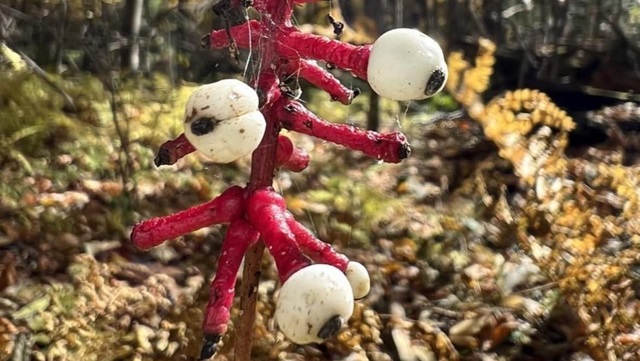America’s National Park Service issued a warning to travelers about White Baneberry, an exotic but poisonous fruit that can be found growing in many areas round the United States. The plant is known for looking like human eyes, something that might make a good Halloween decoration.
Actaea pachypoda, commonly known as White Baneberry or Doll’s Eyes, is a perennial flowering plant native to North America. It’s a member of the Ranunculaceae family and is closely related to the buttercup.
The plant is most recognized for its clusters of bright white, fleshy berries that resemble doll’s eyes. These berries are toxic if ingested. The leaves are compound, typically consisting of three leaflets. White Baneberry can reach a height of about 2-3 feet.
However, all parts of the White Baneberry plant are toxic if ingested. The berries are particularly dangerous due to their resemblance to edible fruits. Ingestion can lead to severe gastrointestinal symptoms, including nausea, vomiting, and diarrhea.
A person’s sensitivity to a toxin can vary depending on their age, weight, physical condition, and individual susceptibility. Children are particularly vulnerable due to their curiosity and small size. The toxicity of a plant can fluctuate based on the season, the specific plant part, and its stage of growth. Additionally, plants can absorb harmful substances like herbicides, pesticides, and pollutants from the surrounding water, air, and soil.
The exact toxic principle remains unknown, but it is believed to be a glycoside, essential oil, or protoanemonin.
“Is that plant looking at me?” said the National Park Service in a Facebook post. “The plant’s most striking feature is its fruit, a 1 cm diameter white berry, whose size, shape, and black stigma scar give the species the name, ‘doll’s eyes.’ Did it just blink? No. You did.”
The National Park Service also explained that a variety of birds, which are not affected by the toxins, or the “creepy eyeball aesthetic,” eat the berries and help disperse the seeds. However, the berries and the entire plant are considered poisonous to humans and can lead to vomiting, delirium, and stomach cramps. “On that note, don’t eat it and have a good one.”




